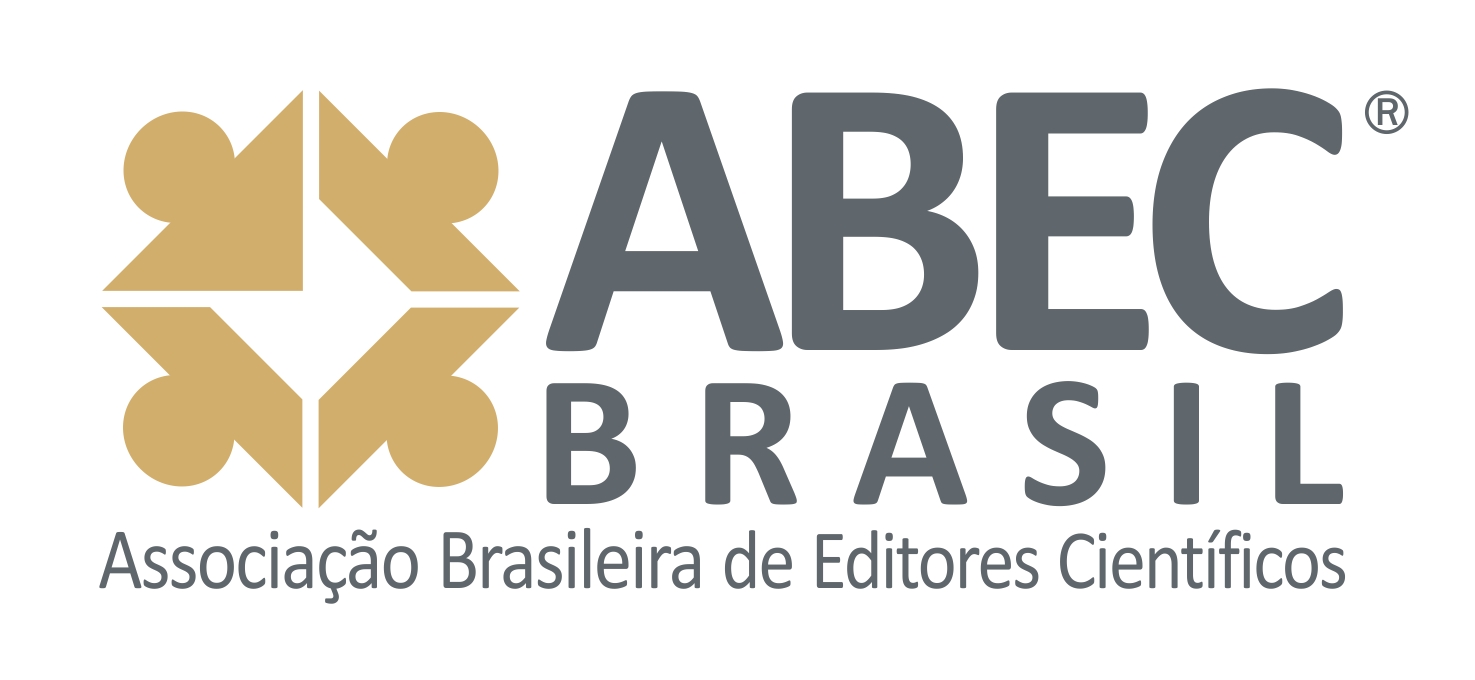OVIPOSITION PREFERENCE OF ð˜—ð˜ð˜¶ð˜µð˜¦ð˜ð˜ð˜¢ ð˜¹ð˜ºð˜ð˜°ð˜´ð˜µð˜¦ð˜ð˜ð˜¢ (Lepidoptera: Plutelidae) AND PARASITISM BY ð˜›ð˜³ð˜ªð˜¤ð˜©ð˜°ð˜¨ð˜³ð˜¢ð˜®ð˜®ð˜¢ ð˜±ð˜³ð˜¦ð˜µð˜ªð˜°ð˜´ð˜¶ð˜® (Hymenoptera: Trichogrammatidae) IN COLLARD GREEN
DOI:
https://doi.org/10.37856/bja.v96i2.4283Resumo
The damage caused by the diamondback moth is a limiting factor in the production of brassicaceous plants worldwide and biological control by an egg parasitoid may be an effective way to control this pest. Thus, understanding oviposition preferences of pests and parasitoids in crop plants can be a key factor in optimizing biological control programs. The present study was aimed at determining the oviposition preference of Plutella xylostella and Trichogramma pretiosum in collard greens. Bioassays consisted of collard plants in cages and P. xylostella adults released inside to lay eggs on the leaves. After 24 hours, the adults were removed and T. pretiosum females released. In another experiment, cardboard strips containing P. xylostella eggs were offered to T. pretiosum released in cages with a collard greens plant inside and replaced every 2 hours for 24 hours. The results showed that P. xylostella has a preference for laying eggs on the leaves of the middle region of the plant, on the upper part of the adaxial surface. For T. pretiosum, no preference was observed, but mean parasitism rates were highest on the upper region of the adaxial surface, where most of the eggs were found. In the second experiment, the highest mean parasitism rates by T. pretiosum were observed at temperatures ranging from 25.9 to 37.4 °C and relative humidity between 42 and 78% in the photophase. No parasitism occurred in scotophase, indicating that field releases should be performed preferably in the early hours of the morning.Referências
ANDOW D.A., PROKRYM D.R. 1991. Release density, efficiency and disappearance of Trichogramma nubilale for control of European corn borer. Entomophaga, v.36, p.105-113. https://doi.org/10.1007/BF02374641
BADENES-PEREZ F.R., NAULT B.A., SHELTON A.M. 2006. Dynamics of diamondback moth oviposition in the presence of a highly preferred non-suitable host. Entomologia Experimentalis et Applicata, v.120, p.23-31. https://doi.org/10.1111/j.1570-7458.2006.00416.x
BIEVER K.D. 1972. Effect of Temperatures on the Rate of Search by Trichogmmma and Its Potential Application in Field Releases. Environmental Entomology, v.1, p.194-197. https://doi.org/10.1093/ee/1.2.194
BOLDT P.E. 1974. Temperature, Humidity, and Host: Effect on Rate of Search of Trichogramma evanescens and T. minutum auctt. (not Riley, 1871). Annals of the Entomological Society of America, v.67, p.706-708. https://doi.org/10.1093/aesa/67.4.706
BOURCHIER R.S., SMITH S.M. 1996. Influence of environmental conditions and parasitoid quality on field performance of Trichogramma minutum. Entomologia Experimentalis et Applicata, v.80, p.461-468. https://doi.org/10.1111/j.1570-7458.1996.tb00960.x
CAMARGO FILHO W.P., CAMARGO F.P. 2010. Acomodação da produção olerÃcola no Brasil e em São Paulo, 1990 - 2010 Análise, Perspectiva e Tendências 2015. Instituto de Economia Agricola. Available from: htpp://www.abhorticultura.com.br [Accessed 10 December 2015]
CARLSSON R. 1980. Quantity and Quality of Leaf Protein Concentrates from Atriplex hortensis L., Chenopodium quinoa Willd. and Amaranthus caudatus L, Grown in Southern Sweden. Acta Agriculturae Scandinavica, v.30, p.418-426. https://dx.doi.org/10.1080/00015128009435289
CHAGAS FILHO N.R., BOIÇA-JÚNIOR A.L., ALONSO T.F. 2010. Biologia de Plutella xylostella L. (Lepidoptera: Plutellidae) em cultivares de couve-flor. Neotropical Entomology, v.39, p.253-259. https://dx.doi.org/10.1590/S1519-566X2010000200017
FARIA C.A., TORRES J.B., FERNANDES A.M.V., FARIAS A.M.I. 2008. Parasitism of Tuta absoluta (Meyrick) in tomato plants by Trichogramma pretiosum Riley in response to host density and plant structures. Revista Ciência Rural, v.38, p.1504-1509. http://dx.doi.org/10.1590/S0103-84782008000600002
FILGUEIRA F.A.R. 2007. Novo manual de olericultura: Agrotecnologia moderna na produção e comercialização de hortaliças, 3°ed. ver. e ampl. UFV, Viçosa, MG. 421p.
FORSSE E., SMITH S.M. BOURCHIER R.S. 1992. Flight initiation in the egg parasitoid Trichogramma minutum: Effects of ambient temperature, mates, food, and host eggs. Entomologia Experimentalis et Applicata, v.62, p.147-154. https://doi.org/10.1111/j.1570-7458.1992.tb00654.x
GINGRAS D., DUTILLEUL P., BOIVIN G. 2003. Effect of plant structure on host finding capacity of lepidopterous pests of crucifers by two Trichogramma parasitoids. Biological Control, v.27, p.25-31. https://doi.org/10.1016/S1049-9644(02)00189-5
HAMILTON A.J., ENDERSBY N.M., RIDLAND P.M., NEAL M. 2005. Effects of cultivar on oviposition preference, larval feeding and development time of diamondback moth, Plutella xylostella (L.) (Lepidoptera: Plutellidae), on some Brassica oleracea vegetables in Victoria. Australian Journal Entomology, v.44, p.284-287. https://doi.org/10.1111/j.1440-6055.2005.00468.x
JELIHOVSCHI E.G., FARIA J.C., ALLAMAN I.B. 2014. ScottKnott: A Package for Performing the Scott-Knott Clustering Algorithm in R. Trends in Applied and Computational Mathematics, v.15, p. 3-17. Available from: http://www.sbmac.org.br/tema/seer/index.php/tema/article/view/646/643. [Accessed 3 January 2017]
KANOUR W.W., BURBUTIS P.P. 1984. Trichogramma nubilale (Hymenoptera: Trichogrammatidae) field releases in corn and a hypothetical model for control of European corn borer (Lepidoptera: Pyralidae). Journal of Economic Entomology, v.77, p.102-107. https://doi.org/10.1093/jee/77.1.103
LUKIANCHUK JL & SMITH SM. 1997. Influence of structural complexity on the foraging success of Trichogramma minutum: a comparison of search on artificial and foliage models. Entomologia Experimentalis et Applicata, v.84, p.221-228. https://doi.org/10.1046/j.1570-7458.1997.00219.x
MARCHIORO C.A., FOERSTER L.A. 2011. Development and survival of the diamondback moth, Plutella xylostella (L.) (Lepidoptera: Yponomeutidae) as a function of temperature: Effect on the number of generations in tropical and subtropical regions. Neotropical Entomology, v.40, p.483-488. https://dx.doi.org/10.1590/S1519-566X2011000500003
OLSON D.M., ANDOW D.A. 2006. Walking pattern of Trichogramma nubilale Ertle e Davis (Hymenoptera: Trichogrammatidae) on various surfaces. Biological Control, v.39, p.329-335. https://doi.org/10.1016/j.biocontrol.2006.08.018
PAK G.A., OATMAN E.R. 1982. Comparative life table, behavior and competition studies of Trichogramma brevicapillum and T. pretiosum. Entomologia Experimentalis et Applicata, v.32, p.68-79. https://doi.org/10.1111/j.1570-7458.1982.tb03183.x
PARRA J.R.P., COELHO JUNIOR A., GEREMIAS L.D., BERTIN A. RAMOS C.J. 2014. Criação de Anagasta kuehniella, em pequena escala, para produção de Trichogramma. Occasio, Piracicaba, SP.
PARRA J.R.P., ZUCCHI R.A. 2004. Trichogramma in Brazil: feasibility of use after twenty years of research. Neotropical Entomology, v.33, p.271-281. https://dx.doi.org/10.1590/S1519-566X2004000300001
PASTORI P.L., MONTEIRO L.B., BOTTON M. PRATISSOLI D. 2007. Capacidade de parasitismo de Trichogramma pretiosum Riley (Hymenoptera: Trichogrammatidae) em ovos de Bonagota salubricola (Meyrick) (Lepidoptera: Tortricidae) sob diferentes temperaturas. Neotropical Entomology, v.36, p.926-931. https://dx.doi.org/10.1590/S1519-566X2007000600015
PEREIRA F.F., BARROS R., PRATISSOLI D. PARRA J.R.P. 2004. Biologia e exigências térmicas de Trichogramma pretiosum Riley e T. exiguum Pinto e Platner (Hymenoptera: Trichogrammatidae) criados em ovos de Plutella xylostella (L.) (Lepidoptera: Plutellidae). Neotropical Entomology, v.33, p.231-236. https://dx.doi.org/10.1590/S1519-566X2004000200014
PEREIRA F.F., BARROS R., PRATISSOLI D., PEREIRA C.L.T., VIANNA U.R., ZANUNCIO J.C. 2007. Capacidade de parasitismo de Trichogramma exiguum Pinto e Platner, 1978 (Hymenoptera: Trichogrammatidae) em ovos de Plutella xylostella (L., 1758) (Lepidoptera: Plutellidae) em diferentes temperaturas. Ciência Rural, v.37, 297-303. http://www.scielo.br/pdf/cr/v37n2/a01v37n2.pdf
PRATISSOLI D., PARRA J.R.P. 2000. Desenvolvimento e exigências térmicas de Trichogramma pretiosum Riley, criados em duas traças do tomateiro. Pesquisa Agropecuária Brasileira, v.35, p.1281-1288. https://dx.doi.org/10.1590/S0100-204X2000000700001
R CORE TEAM. R: A language and environment for statistical computing. R Foundation for Statistical Computing, Vienna, Austria. (2017). Available from: https://www.R-project.org. [Accessed 3 January 2017].
ROMEIS J., BABENDREIER D., WÄCKERS F.L., SHANOWER T.G. 2005. Habitat and plant specificity of Trichogramma egg parasitoids underlying mechanisms and implications. Basic and Applied Ecology, v.6, p.215-236. https://doi.org/10.1016/j.baae.2004.10.004
SCHMIDT J.M. 1994. Host recognition and acceptance by Trichogramma. In: Biological control with egg parasitoids. Wajnberg E & Hassan SA (Eds.), (pp.165-200). Wallingford: CAB International.
SCOTT A.J., KNOTT M. 1974. A cluster analysis method for grouping means in the analysis of variance. Biometrics, v.30, p.507-512. https://doi.org/10.2307/2529204
SHIOJIRI K., TAKABAYASHI J. 2003. Effects of specialist parasitoids on oviposition preference of phytophagous insects: encounter-dilution effects in a tritrophic interaction. Ecological Entomology, v.28, p.573-578. https://doi.org/10.1046/j.1365-2311.2003.00539.x
SMITH SM. 1988. Pattern of attack on spruce budworm egg masses by Trichogramma minutum (Hymenoptera: Trichogrammatidae) released in forest stands. Environmental Entomology, v.17, p.1009-1015. https://doi.org/10.1093/ee/17.6.1009
SMITH SM, HUBBES M & CARROW JR. 1986. Factors affecting inundative releases of Trichogramma minutum Ril. against the Spruce Budworm. Journal of Applied Entomology, v.101, p.29-39. https://doi.org/10.1111/j.1439-0418.1986.tb00830.x
TALEKAR N.S., SHELTON A.M. 1993. Biology, ecology, and management of the diamondback moth. Annual Review of Entomology, v.92, p.275-301. https://doi.org/10.1146/annurev.en.38.010193.001423
TRANI P.A., PASSOS F.A., MELO A.M.T., TIVELLI S.W., BOVI O.A., PIMENTEL E.C. 2010. Hortaliças e plantas medicinais: manual prático, 2 ª ed. rev. atual. Campinas: Instituto Agronômico, 72 p. online (Série Tecnologia APTA, Boletim Técnico IAC, 199).
TRANI P.E., TIVELLI S.W., BLAT S.F., PRELA-PANTANO A., TEIXEIRA E.P., ARAÚJO H.S., FELTRAN J.C., PASSOS F.A., FIGUEIREDO G.J.B., NOVO M.C.S.S. 2015. Couve de folha: do plantio à pós-colheita. Campinas: Instituto Agronômico, 36p. online. (Série Tecnologia Apta. Boletim Técnico IAC, 214).
VINSON S.B. 1997. Comportamento de seleção hospedeira de parasitóides de ovos, com ênfase na famÃlia Trichogrammatidae, pp.67-119. In: Trichogramma e o controle biológico aplicado. Parra JRP & Zucchi RA. (eds). FEALQ, Piracicaba, SP.
WANG B., FERRO D.N., HOSMER D.W. 1997. Importance of plant size, distribution of egg masses, and weather conditions on egg parasitism of the European corn borer, Ostrinia nubilalis by Trichogramma ostriniae in sweet corn. Entomologia Experimentalis et Applicata, v.83, p.337-345. https://doi.org/10.1046/j.1570-7458.1997.00189.x
ZAGO H.B., BARROS R., TORRES J.B., PRATISSOLI D. 2010. Distribuição de ovos de Plutella xylostella (L.) (Lepidoptera: Plutellidae) e o parasitismo por Trichogramma pretiosum Riley (Hymenoptera: Trichogrammatidae). Neotropical Entomology, v.39, p.241-247. https://dx.doi.org/10.1590/S1519-566X2010000200015
ZALUCKI M.P., SHABBIR A., SILVA R., ADAMSON D., LIU S-S., FURLONG M.J. 2012. Estimating the economic cost of one of the world's major insect pests, Plutella xylostella (Lepidoptera: Plutellidae): Just how long is a piece of string? Journal Economic Entomology, v.105, p.1115-1129. https://doi.org/10.1603/EC12107











